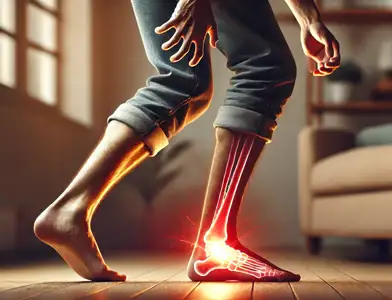Pain from the Pressure of Walking: Causes, Symptoms, and Treatments

Pain from the pressure of walking is a common issue that can affect many people. It can stem from various causes, including musculoskeletal problems and vascular conditions such as peripheral artery disease (PAD). Symptoms often include pain in the calves, thighs, hips, or buttocks during movement. Identifying the cause is crucial for proper treatment and managing daily life.
Understanding Pain from Walking
Common Symptoms
Recognizing Claudication: Pain in the calves, thighs, hips, or buttocks during movement. Symptoms stop with rest.
Identifying Chronic Pain: Persistent discomfort in the lower limbs that may worsen over time.
Impact on Daily Life
Pain from walking can significantly affect daily activities. This discomfort may lead to limitations in mobility and overall quality of life.
Potential Causes of Walking Pain
Walking pain can stem from a variety of sources, including musculoskeletal issues and vascular problems. Understanding these potential causes is crucial for effective treatment and management.
Musculoskeletal Conditions
- Fascitis Plantar
- Tendinitis of Achilles
Pelvic and Lower Back Issues
- Cause Pelvic Pain When Walking
- Lower Back Pain That Worsens with Walking
Vascular Issues
- Diagnosis Methods
- Medical Interventions
Other Conditions
- Ingrown Toenails
- Bunions
Musculoskeletal Conditions
Conditions affecting the muscles, tendons, and bones can lead to pain when walking. Fascitis Plantar, a common condition involving inflammation of the foot’s connective tissue, and Tendinitis of Achilles, which affects the Achilles tendon, are examples of musculoskeletal causes of walking pain.
Vascular Issues
Problems with blood vessels can also contribute to pain while walking. Diagnosis Methods such as imaging tests and the Ankle-Brachial Test are used to identify vascular issues. Medical Interventions may include medications or surgical procedures to address the underlying vascular problems.
Pelvic and Lower Back Issues
Pain during walking can also be linked to pelvic or lower back issues. Understanding the specific causes of Pelvic Pain When Walking and Lower Back Pain That Worsens with Walking is essential in developing an appropriate treatment plan.
Other Conditions
Additionally, conditions like Ingrown Toenails and Bunions can cause discomfort while walking. Identifying and addressing these issues is important for overall foot health and mobility.
Frequently Asked Questions (FAQs)
What causes pain from the pressure of walking?
Pain from the pressure of walking is often caused by peripheral neuropathy, which results from damage to the peripheral nerves. Common causes include diabetes, nerve compression, autoimmune diseases, and certain medications.
How is pain from the pressure of walking diagnosed?
Diagnosis involves a comprehensive medical history, physical examination, and diagnostic tests such as nerve conduction studies, electromyography (EMG), and blood tests to identify the underlying cause of the pain.
What treatments are available for pain from the pressure of walking?
Treatments include medications, physical therapy, low-level light therapy, pulsed electromagnetic field therapy, massage therapy, and lifestyle changes to manage symptoms and improve nerve function. The treatment plan is customized to the individual’s specific condition.
Can lifestyle changes help with pain from the pressure of walking?
Yes, lifestyle changes such as maintaining a healthy diet, engaging in regular exercise, managing blood sugar levels (for diabetics), avoiding alcohol, and quitting smoking can help manage and reduce symptoms of peripheral neuropathy.
Is pain from the pressure of walking a serious condition?
Persistent or severe pain from the pressure of walking may indicate a serious underlying condition such as peripheral neuropathy and should be evaluated by a healthcare professional. Early diagnosis and treatment can prevent further complications.